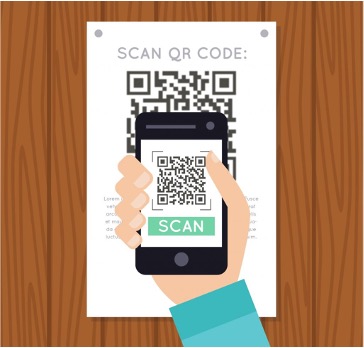
As our society becomes increasingly reliant on mobile phones, it would seem like an obvious talent for skilled marketers to hone in on. However, marketers are making the detrimental mistake of treating mobile marketing as an extension of desktop marketing. Some marketers fail to notice that mobile is its own platform upon which you can build intricate marketing strategies and reach your audiences in entirely new ways.

Statista – 2020
Did you know that by 2024, it is estimated that 3.8 million of the Irish population will be smart phone users. Mobile isn’t just the future, it has revolutionised business, mobile devices are a key communication tool worldwide. The world we live in becomes more and more mobile-centric each year and it’s time that every marketer gets on board.
What is mobile marketing?
Mobile marketing to put it simply, is the process of reaching an audience via handheld device or otherwise untethered devices in the form of smartphones or tablets. Mobile marketing strategically puts a company or brand in direct contact with their target audience. Mobile marketing sounds pretty straight forward, however there are several factors that make successful marketing on the go to audiences quite difficult. Here are some core concepts of mobile marketing to note in order to make the most of your mobile marketing campaigns.
Speed – The most important element as everything on mobile is done quickly, whether it be a quick social media check on a lunch break or a last-minute opening hour search of a local shop. It is essential to keep speed the most prioritised element at the forefront of their mobile marketing strategy.
Convenience – This is another important variable of mobile marketing as audiences’ lifestyles become busier and busier, when on the go especially there is only a few minutes of a window to capture someone’s attention, be it during a lunch break or scrolling on their feed in between advert breaks. The point is that making your request simplistic and fast will make your campaign more successful.
Simplistic – As mentioned above, simple and fast mobile marketing is the most effective. Trading out being overly creative and overcomplicating your campaigns with being direct and having a highly effective CTA in front of your audience is the best way to go.
Types of Mobile Marketing
Mobile marketing can be daunting and conjures up different ideas for different people and that is mostly because there is so many different types of mobile marketing tactics that can be used. Much of what is known about mobile marketing is that of traditional digital marketing but adjusted and modified to suit hand-held devices.
Text Message (SMS) – or better known as texting. Using SMS, marketers can send messages to customers with offers, discounts and other information. This is probably the most predominantly used mobile marketing tactics today. If being used, this type of marketing should always have an opt-in/out option for customers.
Sometimes a link maybe included in the texts directing the user to a page which either provides additional information or a link to buy a certain product. This method can also be rather sceptical as many users may be reluctant to clink on a link in a mass marketing message due to the increase of scams that happen online. It is essential to ensure that your audiences know that your brand is legit when using this method.

Social Media Messaging / Apps – While there are several social media platforms with messaging built in, the one that should be focused on is Facebook. The world’s largest social network is where your mobile marketing should be focused. Even though Ads are not a full-fledged element on messaging as of yet, Facebook still allows you to send instant promotional messages with special offers, discounts and coupons to help you close the deal.
Apps such as Instagram, LinkedIn and of course Facebook, allow marketers to include advertisements on the platforms in the form of stories, posts and sponsored content. This is a highly effective way of reaching a certain target audience.
Video Content – Video ads are another essential element of mobile marketing as more and more hand-held devices are being used to watch video content on the go. When watching stories on Snapchat or Instagram their algorithm is now set up that rolled out ads are interspersed throughout the playback.
While being able to advertise on video has been a trend for quite some time, it is only now that marketers are beginning to take more advantage of it as audiences accessing YouTube with hand-held devices is increasing at a staggering rate. Viewers are accessing quick tutorials, products reviews and all-round last-minute decision buying video content to help them make purchasing decisions.
Video AD’s are beginning to display on different platforms, such as a user using a mobile app or reading an article often times a video ad will appear. This form of marketing content proves to be highly effective across audiences especially in mobile marketing scenarios as they tend to be short, snappy and to the point.

QR Codes (quick response barcode) – Quick Response codes can be scanned with a camera on a mobile device. QR codes store a lot of data and can be transmitted quickly and digitally which makes them ideal for mobile device users. If you have a lot of data to transmit via a mobile browser, using QR codes can speed up your site and make it more easily accessible for mobile users. Once these codes are scanned, it will take consumers to a website where they can view more information about a business. QR codes are user friendly and can be used for just about anything. It is easily accessible to set up your own QR codes using sites such as Kaywa at a low price. A QR code can enhance your customer engagement and also help you grown on the social realm. Your code can be linked to any site also be it your website or a social page, QR codes can help you to attract new customers.

Location Based Marketing – This uses the mobile user’s device location to market a business in that area by means of GPS. For example, you might be visiting Dublin and you may see ads for restaurants appearing on your device tailored to your location. Advertisers can decide the radius for their ads. This is a useful method of advertising for locally owned businesses during summertime as visitors coming to the area will receive adverts for local restaurants in their area and increasing their audience.

Once you understand the importance of treating mobile as a totally separate marketing system to traditional marketing, it’s time to develop your mobile marketing strategy.
1. Create Customer Buyer Personas
Just like any marketing strategy begins you need to know who you are directing your message towards and thoroughly understand who they are before you can reach them successfully. This descriptive guide by HubSpot outlines all the necessary details in outlining your buyers personas https://blog.hubspot.com/marketing/buyer-persona-research
In addition to standard demographics and behavioural information, its important to include information about their digital usage also such as;

2. Define your Marketing Goals
Defining your goals like in any marketing strategy will help you to understand the steps and actions you need to take during the marketing process to complete your strategy document. Having a detailed outline of a marketing plan will help give structure to your strategy and ensure your goals are met.
An important question to ask yourself is what do you want to accomplish from this marketing campaign;
It’s also crucial to ask yourself questions when setting your overall goals for each mobile marketing campaign such as;
Going back to basics, but it is important to ensure that when you are setting goals that they are SMART.

3. Set your Mobile Marketing KPI’s
Now that you have your goals set in place it is important to clarify how you will be measuring and tracking these goals. You can only understand the success/failure of your goals if you’re measuring and predetermining a certain figure you want to hit daily or weekly.
For example; if your current mobile traffic to your website stands at 10k visits a month and you wanted to see an increase in 20% in the next month, then you would set a KPI of 12k monthly visits by a certain date.
4. Define and outline what mobile marketing tools you will use to achieve and monitor your goals
What tools will you be using to monitor the performance of your mobile marketing strategies? Its important to do your research and decide on what marketing tools will be most effective at tracking each goal.
Google analytics is a practical tool in understanding the traffic for your website and the devices that have been used to access your site. Google analytics also provides you with user behaviour reports and what pages of your site are most visited.
Facebook/LinkedIn campaign ad managers are another user-friendly tool that allows you to monitor the performance of your campaigns on these platforms. Performance stats such as page views, CTR and reach are displayed in these reports.
Before you start creating new mobile marketing campaigns, its vital to ensure that you have the resources in place to carry through and track KPI’s. Otherwise you will never understand if you have achieved your goals, achieved your targeted KPI’s or how your mobile marketing strategies have improved at all.